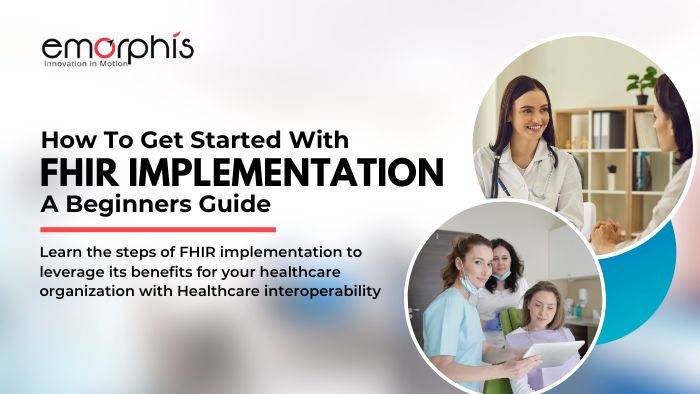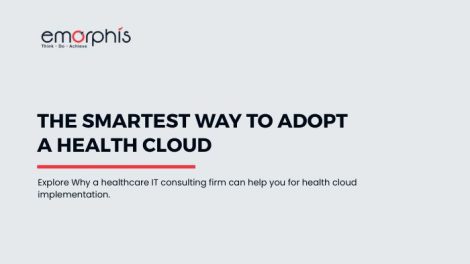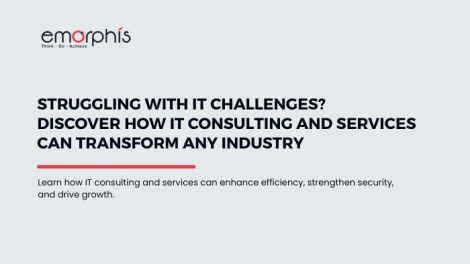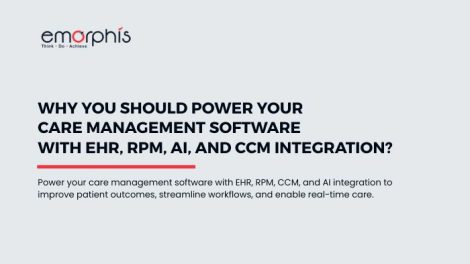FHIR (Fast Healthcare Interoperability Resources) is an essential tool for modern healthcare. It is a standard for exchanging healthcare information electronically. FHIR makes it easier for healthcare providers to exchange data between systems and for patients to access their health information. FHIR works on modern web technologies and is flexible, modular, and extensible. Hence, making it a powerful tool for managing healthcare data. With the growth of electronic health records (EHRs) and the increasing demand for secure and efficient data exchange. In fact, it is important to understand how to start with FHIR. In this FHIR implementation guide, we will cover the basics of FHIR. Also, provide step-by-step instructions to start with this cutting-edge technology.
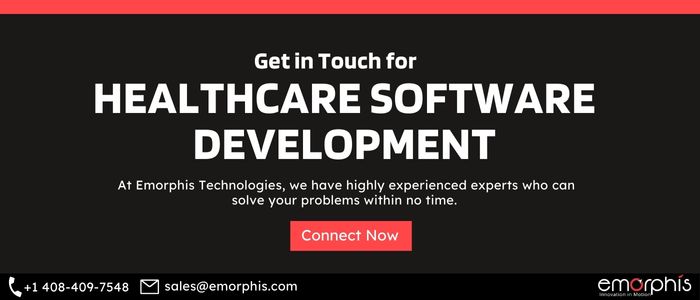
Step 1: Familiarize yourself with FHIR
Familiarize yourself with the basics of this healthcare data standard. FHIR is essentially a set of rules that enable healthcare data exchange between different systems and applications. Making it easier for patients and healthcare providers to access and manage medical information. FHIR is flexible and can adapt to different healthcare contexts. Which makes it a popular choice for organizations of all sizes.
To better understand FHIR, it’s helpful to think of it as a common language for healthcare data. Just like how people from different parts of the world speak different languages. Healthcare systems also use different languages to communicate with each other. FHIR is like a universal translator that helps different systems understand and exchange information with each other.
FHIR (Fast Healthcare Interoperability Resources) uses a standard set of data elements, called resources. This is to represent various types of healthcare data. For example, a patient resource might include information about a patient’s name, date of birth, and medical history. A medication resource might include information about a specific medication. Such as its name, dosage, and instructions for use. By using these standard resources, healthcare systems can exchange data more easily and accurately.
Overall, understanding the basics of FHIR is essential for anyone looking to implement this technology in their healthcare organization. Even if you’re not a tech expert, it’s important to have a general understanding of what FHIR is and how it works. This will help to make informed decisions about how to use it effectively.
Step 2: Choose an FHIR Server
What exactly is an FHIR server and why is it important?
An FHIR server is a software application. That provides a platform for storing and managing healthcare data using the FHIR standard. It acts as a central repository for FHIR resources. And allows users to query and access the data using FHIR-compliant API (Application Programming Interface) calls. Essentially, an FHIR server is the backbone of any FHIR implementation.
When choosing an FHIR server, it’s important to consider factors such as functionality, scalability, security, and cost. There are many different FHIR servers available, including open-source options and commercial products. Some popular open-source FHIR servers include HAPI FHIR, Firely FHIR Server, and Smile CDR. Commercial options include Microsoft Azure API for FHIR, Google Cloud Healthcare API, and AWS HealthLake.
For non-technical people looking to implement FHIR
It may be helpful to work with a vendor or consultant who has experience with FHIR implementations. They can provide guidance on choosing the right FHIR server for your specific needs. And also helps with the implementation process.
Overall, choosing the right FHIR server is crucial for a successful FHIR implementation. It’s important to consider factors such as functionality, scalability, security, and cost when making this decision. Working with a vendor or healthcare software development consultant can be helpful for non-technical people looking to implement FHIR.
Step 3: Set up your development environment
In this step, the goal is to set up a development environment to start building FHIR applications. A development environment is a combination of software tools and configurations. Which helps to create, test, and deploy software applications. Setting up a development environment for FHIR is an essential step for anyone looking to build FHIR-based applications.
Setting up a development environment for FHIR typically involves installing and configuring a few key software components. The first component is an FHIR client. Which is a software tool that allows developers to interact with an FHIR server. And also perform CRUD (Create, Read, Update, Delete) operations on FHIR resources. Some popular FHIR clients include Postman, Insomnia, and Firefly.
The second component is a code editor or integrated development environment (IDE). That is a software tool that developers use to write and edit code. Some popular code editors for FHIR development include Visual Studio Code, Eclipse, and IntelliJ IDEA.
Finally, developers will also need to install an FHIR server or connect to an existing FHIR server to test their applications. This can be done using a cloud-based FHIR server. Such as Microsoft Azure API for FHIR or Google Cloud Healthcare API, or by setting up a local FHIR server using an open-source tool like HAPI FHIR.
For non-technical people looking to implement FHIR
It may be helpful to work with healthcare software developers to set up the development environment. They can provide guidance on which software tools to use and can help with the configuration process.
Overall, setting up a development environment for FHIR is an essential step for building FHIR-based applications. It involves installing and configuring software tools such as an FHIR client, code editor or IDE, and an FHIR server. Working with a development team can be helpful for non-technical people looking to implement FHIR.
Step 4: Write your first FHIR client
In this step, the goal is to write your first FHIR client. This is a software tool that allows you to interact with an FHIR server. And also perform CRUD (Create, Read, Update, Delete) operations on FHIR resources.
To write your first FHIR client, you will need to have some basic programming skills. Also, knowledge of a programming language such as JavaScript or Python. You will also need to have an FHIR server to connect to.
The first step is to choose a programming language and an FHIR client library that is compatible with that language. Some popular FHIR client libraries include fhir.js, fhirclient.js, and the HAPI FHIR client for Java.
Once you have chosen your FHIR client library, you can start writing code to interact with the FHIR server. This typically involves sending HTTP requests to the FHIR server using the FHIR API. And parsing the responses to retrieve or modify FHIR resources.
For example, if you wanted to retrieve a patient resource. As in from the FHIR server using the fhir.js library in JavaScript, you could write code like this:
javascript
var fhir = require('fhir.js');
var client = fhir({
baseUrl: 'myfhirserverdotcom',
auth: {
bearer: 'myaccesstoken'
}
});
client
.read({
type: 'Patient',
id: '12345'
})
.then(function(patient) {
console.log(patient);
});
In this code, we are using the fhir.js library to create an FHIR client. It connects to an FHIR server at the URL ‘myfhirserverdotcom’, and authenticates using an access token. We then use the read method to retrieve a Patient resource with the ID ‘12345’. Finally, log in to the console.
For non-technical people looking to implement FHIR
It may be helpful to work with a developer partner to write the first FHIR client. A healthcare software development partner can provide guidance on which programming language and FHIR client library to use. And also helps with the code-writing process.
Overall, writing your first FHIR client is an important step to start with FHIR. It involves choosing a programming language and FHIR client library and writing code to interact with the FHIR server using the FHIR API. Working with a developer partner can be helpful for non-technical people looking to implement FHIR.
Step 5: Start integrating with other systems
In this step, the goal is to start integrating with other systems. This involves using the FHIR standard to exchange health data between different systems in a consistent and interoperable way.
Integrating with other systems typically involves using FHIR’s RESTful API to send and receive data, and mapping the data to and from the internal data formats used by each system.
For example, a healthcare organization might use FHIR to exchange patient data between its electronic health record (EHR) system and a population health management system. The EHR system might use its own internal data model. This is to represent patient data, while the population health management system might use a different data model. By using FHIR to exchange data, the two systems can communicate with each other even though they use different data models.
Other examples of systems that might be with FHIR integration include health information exchanges, patient portals, telehealth platforms, and mobile health apps.
For non-technical people looking to implement FHIR
It may be helpful to work with a healthcare integration service provider to integrate with other systems. They can provide guidance on which systems to integrate with and can help with the integration process.
Overall, integrating with other systems is an important step in realizing the benefits of FHIR. It involves using FHIR’s RESTful API to exchange data between different systems. And mapping the data to and from the internal data formats used by each system. Working with an integration service provider can be helpful for non-technical people looking to implement FHIR.
Step 6: Test and Deploy
In this step, the goal is to test and deploy your FHIR implementation. This involves ensuring that your FHIR client and server are working correctly and can handle expected use cases.
Testing your FHIR implementation is important to ensure that it is functioning as per expectation. And also, to identify and fix any issues before it deploys in a production environment. It is important to test your implementation against a variety of scenarios, including normal use cases, edge cases, and error cases.
For non-technical people looking to implement FHIR
It may be helpful to work with a qualified software testing and quality assurance service provider to test and deploy the FHIR implementation. They can provide guidance on which test cases to run and can help with the testing and deployment process.
Some important test cases to consider when testing an FHIR implementation include:
- CRUD operations: Test that you can create, read, update, and delete FHIR resources using your FHIR client.
- Authorization: Test that your FHIR client can authenticate with the FHIR server and that you can control access to FHIR resources based on the user’s role and permissions.
- Error handling: Test that your FHIR client and server can handle errors gracefully and provide informative error messages.
- Interoperability: Test that your FHIR implementation can exchange data with other FHIR systems in a consistent and interoperable way.
Take a look at A Comprehensive Guide to Healthcare Interoperability and Redox Integration
Once you have tested your FHIR implementation, you can deploy it in a production environment. Deployment typically involves setting up an FHIR server on a web server or cloud platform and configuring it to handle requests from your FHIR client.
Overall, testing and deploying your FHIR implementation is an important step in ensuring that it is working correctly and can handle expected use cases. It involves testing against a variety of scenarios and deploying in a production environment. Working with a testing team, developers or a development team can be helpful for non-technical people looking to implement FHIR.
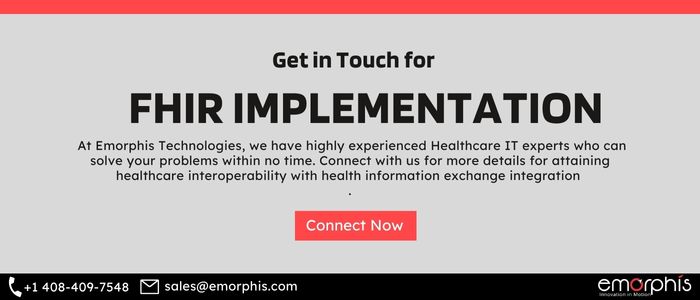
Revolutionizing Healthcare with FHIR enabled Healthcare Interoperability
Overall, healthcare interoperability allows for greater collaboration between providers resulting in better care for patients. With access to comprehensive patient records from multiple sources, physicians can make informed decisions faster and provide timely treatment based on accurate information. Additionally, when implemented properly it can also help reduce administrative costs by streamlining processes like billing and medical record keeping.
By enabling secure data-sharing across disparate systems, healthcare interoperability makes it possible for stakeholders to securely access real-time information about treatments and outcomes to identify trends that could improve population health management initiatives. Furthermore, since all participating organizations have access to the same information there is less of a need for duplication of services or duplicate records which can help reduce overall costs as well as eliminate wasteful practices.
In summary, healthcare interoperability offers numerous benefits including improved coordination among providers and better quality care for patients while helping reduce administrative costs associated with running a medical practice. By leveraging the flexibility and security offered by standards-based solutions like the Unified Health Interface (UHI), organizations can ensure that their patient data remains safe while still allowing them easy access when needed.
Closing Note
By following these six steps, you can start with FHIR and begin leveraging its benefits for your healthcare organization. FHIR is an important standard that can help improve healthcare interoperability, increase data sharing, and also ultimately improve patient outcomes. While implementing FHIR may seem daunting at first, working with a healthcare software development company and following these steps can help make the process easier. Whether you’re a healthcare provider, payer, or other healthcare organization, FHIR can help you achieve your goals and move towards a more connected and efficient healthcare ecosystem.
Starting with FHIR is relatively straightforward, especially for developers with prior experience in healthcare IT. Familiarize yourself with the standard, choose a FHIR server, set up your development environment, write your first client, integrate with other systems, and test your solution thoroughly. With these steps, you’ll be well on your way to utilizing the benefits of FHIR for your healthcare organization.
Frequently Asked Questions on FHIR
What is the meaning of FHIR?
FHIR stands for “Fast Healthcare Interoperability Resources“. It is a standard for exchanging healthcare information electronically. It is designed to make it easier for healthcare providers to share data between systems and for patients to access their health information. FHIR was developed by the health informatics standards organization HL7 (Health Level Seven International) and is based on modern web technologies. Hence, making it more flexible and easier to implement than previous healthcare data exchange standards.
Is FHIR an HL7 standard?
Yes, FHIR (Fast Healthcare Interoperability Resources) is an HL7 (Health Level Seven International) standard. HL7 is a non-profit organization that develops and promotes standards for the exchange, integration, sharing, and retrieval of electronic health information. FHIR is one of the newer standards developed by HL7 and is designed to address some of the limitations of previous HL7 standards. It is by using modern web technologies and modular data elements called “resources”.
What is the difference between FHIR and HL7 ?
FHIR (Fast Healthcare Interoperability Resources) and HL7 (Health Level Seven International) are related but different healthcare data exchange standards.
HL7 is a broader standard for healthcare information exchange that has been in use for several decades. It provides a framework and message formats for exchanging clinical and administrative data between healthcare systems.
FHIR, on the other hand, is a newer and more modern standard that was developed specifically to address the challenges of exchanging health data in the current digital era. FHIR uses modern web technologies and focuses on modular data elements called “resources” that can be easily exchanged and combined.
In summary, HL7 is a more general standard that has been around for many years. FHIR is a newer and more specific standard that is designed to make it easier to exchange health data between systems using modern web technologies.
Is FHIR a framework or an API?
FHIR (Fast Healthcare Interoperability Resources) is both a framework and an API (Application Programming Interface).
As a framework, FHIR provides a set of rules and guidelines for organizing and exchanging healthcare data in a standardized way. It defines a set of modular data elements called “resources” that can be easily exchanged and combined to represent a wide range of clinical and administrative information.
As an API, FHIR provides a set of standardized interfaces and protocols that allow software applications to communicate with each other and exchange healthcare data in a structured format. FHIR APIs are based on modern web technologies, such as RESTful web services, JSON, and XML, making them more flexible and easier to use than previous healthcare data exchange interfaces.
Is FHIR a database?
No, FHIR (Fast Healthcare Interoperability Resources) is not a database.
Rather, FHIR is a standard for organizing and exchanging healthcare information electronically. It provides a set of guidelines and rules for how healthcare data should be structured and shared, using modular data elements called “resources”.
FHIR does not provide a database or storage mechanism for healthcare data, but it can be used to exchange data between different healthcare systems and applications, including databases, electronic health records (EHRs), clinical decision support tools, and mobile health apps.
Is FHIR a datamodel?
Yes, FHIR (Fast Healthcare Interoperability Resources) can be thought of as a data model for healthcare information exchange.
A data model is a conceptual representation of data structures, relationships, and rules that govern how data is stored, processed, and shared. In the case of FHIR, the data model is based on a set of modular data elements called “resources”. Each resource represents a discrete piece of healthcare information, such as a patient, medication, or diagnostic report, and includes a standard set of fields and attributes that describe the data.
The FHIR data model is designed to be flexible and modular, making it easier to represent a wide range of healthcare information in a consistent and interoperable way. The data model is also designed to be easily extended or customized to meet the specific needs of different healthcare systems and applications.
How is FHIR data stored?
FHIR (Fast Healthcare Interoperability Resources) does not prescribe a specific way of storing data, but rather provides a set of standards and guidelines for exchanging and accessing healthcare information electronically.
In other words, FHIR specifies how healthcare data should be structured and shared, but it does not dictate where or how the data should be stored. The actual storage mechanism for FHIR data will depend on the specific healthcare system or application that is using FHIR.
Some healthcare systems and applications may choose to store FHIR data in a traditional relational database, while others may use a document-oriented NoSQL database or another type of data store. The choice of storage mechanism will depend on factors such as the type and volume of data being stored, the performance and scalability requirements of the system, and the specific needs of the healthcare organization or application.
Is FHIR a protocol?
FHIR (Fast Healthcare Interoperability Resources) is not a protocol, but rather a set of standards and guidelines for exchanging and accessing healthcare information electronically.
However, FHIR does specify the number of protocols that can be used for exchanging healthcare data, such as HTTP, REST, and OAuth2. These protocols define the specific rules and formats for transmitting and authenticating data over a network, and they are used to enable secure and reliable communication between different healthcare systems and applications.
So while FHIR itself is not a protocol, it does rely on a number of underlying protocols to facilitate the exchange of healthcare information.
What are the three components of FHIR?
There are three main components of FHIR (Fast Healthcare Interoperability Resources):
Resources: FHIR resources are the building blocks of healthcare data and represent a specific piece of clinical information, such as a patient, medication, or diagnosis. Each resource has a standard structure and set of elements that describe its characteristics and relationships with other resources.
API: FHIR provides a standard API (application programming interface) for accessing and manipulating healthcare data. This API is based on modern web technologies, such as REST and JSON, and allows healthcare systems and applications to easily exchange data using standard web protocols.
Terminology: FHIR includes a standard terminology framework that defines the codes and concepts used to represent clinical data. This framework allows different healthcare systems and applications to use a common language when exchanging data, which helps to ensure that data is accurately interpreted and understood by all parties involved.
Is FHIR software?
No, FHIR (Fast Healthcare Interoperability Resources) is not software. It is a standard for exchanging healthcare information electronically, designed to make it easier for healthcare providers to share data between systems and for patients to access their health information.
FHIR provides a set of resources and a standard API (application programming interface) for accessing and manipulating healthcare data, as well as a terminology framework for defining the codes and concepts used to represent clinical data. However, FHIR does not provide any software or specific implementation of the standard; it is up to individual healthcare organizations and software vendors to develop and implement their own FHIR-based systems and applications.



